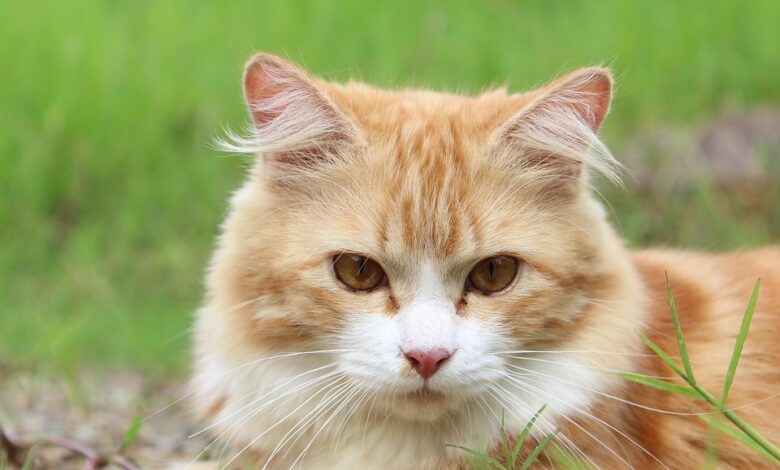Pet Insurance: Protecting Animal Companions and Wallets

For millions of people around the globe, dogs, cats, and other domestic animals are far more than mere household pets; they are cherished, non-human members of the family unit. These loyal companions bring immense, unconditional joy, provide comfort, and enrich our daily lives in countless profound ways.
As a result, when a beloved animal companion faces a sudden injury or is diagnosed with a serious, chronic illness, the emotional distress felt by the owner is often comparable to that of a human family crisis. Modern veterinary medicine has advanced tremendously, now offering sophisticated and highly effective treatments, including complex surgeries, advanced diagnostics, and long-term specialty care.
However, the cost of these cutting-edge medical services can be astonishingly high and entirely unpredictable, often creating a severe financial dilemma for owners. Pet health insurance has emerged as the essential financial solution designed specifically to mitigate these sudden and massive veterinary expenses.
This specialized coverage ensures that critical medical decisions for the pet can be based solely on necessity and prognosis, rather than on the owner’s immediate ability to afford the huge bills. It provides an indispensable financial safety net that guarantees beloved pets receive the high-quality care they need and deserve throughout their lives.
The Rising Cost of Modern Pet Care
Understanding the necessity of pet health insurance begins with acknowledging the rapid escalation of veterinary costs. Veterinary medicine today is highly advanced, mirroring the capabilities found in human healthcare. Veterinarians now offer advanced services that were simply unavailable a few decades ago. These sophisticated services come with corresponding costs.
Procedures like MRI scans, chemotherapy treatments, and advanced orthopedic surgeries are common practice now. A single major surgery for a complex issue like a fractured leg can easily cost thousands of dollars. Ongoing specialized treatment for chronic conditions like diabetes or cancer can quickly exceed a family’s annual savings.
For many owners, facing a sudden $5,000 to $10,000 bill presents a severe financial shock. Without insurance, owners may be forced to make agonizing choices about their pet’s care. They might have to choose between a life-saving treatment and immense personal financial hardship. Pet insurance removes this terrible dilemma entirely.
The goal of pet insurance is to make predictable and budgeted monthly payments. These payments mitigate the risk of a catastrophic, sudden expense. It is a fundamental shift in managing the unpredictable financial reality of modern pet ownership.
Core Coverage Pillars Explained
Pet insurance policies are generally divided into two or three primary categories of coverage. Understanding these distinctions is critical for choosing the right plan for a specific animal companion. The coverage should align with the pet’s age and health history.
A. Accident-Only Plans
Accident-only plans are the most basic and typically the least expensive form of pet insurance. This type of policy provides financial coverage only for unexpected injuries. These injuries might include fractures, bite wounds, ingestion of toxins, or being hit by a car. This focused coverage is purely for sudden, external physical trauma.
This plan does not cover any illness, chronic disease, or routine veterinary expenses. It is an excellent choice for owners seeking a simple safety net against high-cost emergency room visits. This is particularly appealing for highly active, younger pets. It guards against the most immediate, severe financial shocks.
B. Accident and Illness Plans
The Accident and Illness plan is the most common and comprehensive type of pet insurance available. This plan covers all costs associated with unexpected accidents. Crucially, it also covers the diagnosis and treatment of a wide array of illnesses. This includes everything from minor infections to serious chronic conditions like heart disease or cancer.
This coverage typically includes specialist care, hospitalizations, laboratory fees, and advanced diagnostic testing. It is the gold standard for robust financial protection throughout a pet’s life. This plan provides the most complete peace of mind to owners.
C. Wellness and Routine Care Riders
Wellness plans are not insurance in the traditional sense, but they are often offered as an optional rider or add-on to a core policy. This covers predictable, routine veterinary expenses. Examples include annual check-ups, vaccinations, flea/tick preventatives, and routine blood work. This rider helps budget for the regular, non-emergency costs of pet ownership.
The cost of this rider is often close to the cost of the services themselves. Its value lies in promoting preventative care. By making wellness care financially accessible, this plan encourages owners to keep their pets healthier.
Understanding Policy Parameters

Just like human health insurance, pet insurance utilizes several key parameters that define the owner’s financial responsibility. These components determine the final monthly premium and the eventual out-of-pocket costs during a claim. Careful selection is required for a cost-effective plan.
D. Reimbursement Percentage
This parameter dictates the percentage of the covered veterinary bill that the insurer will pay. Common reimbursement levels are 70%, 80%, or 90%. Choosing a 90% reimbursement level results in a higher premium. However, it leaves the owner responsible for a smaller portion of the bill after the deductible is met.
E. Annual Deductible
The annual deductible is the set amount the owner must pay out-of-pocket each year before the insurer begins to reimburse. Deductibles can range from $100 to $1,000 or more. A higher annual deductible translates directly into a lower monthly premium. The owner must choose a deductible they can comfortably afford to pay immediately.
F. Annual Maximum Limit
Many pet policies impose an annual maximum limit on the total amount the insurer will pay out in one policy year. Limits often range from $5,000 to $30,000, or some plans offer unlimited annual benefits. Higher limits are crucial for treating serious, catastrophic illnesses that require extensive, ongoing specialist care.
G. Waiting Period
All pet insurance policies impose a waiting period between the policy’s start date and when coverage officially begins. This period varies for accidents (often 2-14 days) and illnesses (often 14-30 days). Some policies also have extended waiting periods for specific orthopedic conditions like cruciate ligament issues. This measure prevents owners from purchasing insurance only after an illness has already occurred.
Critical Exclusions: The Fine Print
It is absolutely crucial for owners to understand the common exclusions that are standard across almost all pet insurance policies. These exclusions represent risks that the insurer will not cover under any circumstances. Reviewing these limitations prevents major surprises during a claims process.
H. Pre-Existing Conditions
The most significant and common exclusion is pre-existing conditions. This refers to any injury or illness that showed clinical signs or symptoms before the policy’s effective date or during the initial waiting period. The insurer will not pay for the diagnosis or treatment of that specific condition. This exclusion protects the integrity of the risk pool.
Some policies, however, provide coverage for “curable” pre-existing conditions. If a condition, such as an ear infection, is fully treated and symptom-free for a certain period (e.g., six months), the insurer may resume coverage for that issue. Owners should inquire about the policy’s specific stance on curable conditions.
I. Elective and Cosmetic Procedures
Procedures deemed not medically necessary are typically excluded from coverage. This includes routine cosmetic surgeries, tail docking, ear cropping, or declawing. Policies focus strictly on necessary treatments for illness or injury. These are considered unnecessary risks.
J. Behavioral Issues and Training
While diagnosis of a behavioral issue by a certified veterinary behaviorist may be covered, the cost of training or behavioral modification programs is often excluded. Owners should check if their policy covers necessary medications for anxiety or behavioral disorders. This is a common gray area.
K. Certain Supplements and Diets
Policies often exclude the cost of prescription or specialized foods and nutritional supplements. This is true even when a veterinarian prescribes them for a covered illness. The rationale is that food and supplements are ongoing, predictable costs of pet ownership. This is a significant budget item to plan for.
Navigating the Claims Process

The process for filing a pet insurance claim is straightforward but requires diligent record-keeping on the part of the pet owner. Unlike human health insurance, pet insurance is typically a reimbursement model. The owner pays the full veterinary bill upfront.
The owner must first pay the veterinarian for all services rendered. The vet then provides a detailed, itemized invoice and a copy of the pet’s medical records to the owner. This documentation must be submitted to the insurance carrier.
The owner then completes the insurance claim form and submits it, along with the detailed invoice and medical records, to the insurer. This submission can usually be done quickly via a mobile app or a dedicated online portal. Prompt submission is key to rapid reimbursement.
The insurance carrier reviews the documents to verify that the condition is a covered peril and not a pre-existing condition. They then apply the annual deductible and the policy’s reimbursement percentage. Finally, the insurer sends a reimbursement check or direct deposit to the pet owner.
This process highlights the importance of the owner having sufficient funds readily available to cover the upfront cost of treatment. The reimbursement may take several days or a few weeks to arrive. This cash-flow requirement is a crucial aspect of pet insurance.
Factors Influencing Premium Costs
The monthly premium cost for pet health insurance is highly variable. It is determined by several specific risk factors unique to the pet. Understanding these factors helps owners manage their ongoing insurance expense effectively.
The breed of the pet is a primary determinant of cost. Certain breeds, such as purebred large dogs, are genetically predisposed to specific, high-cost health issues. These might include hip dysplasia or certain heart conditions. Breeds with higher statistical risk will have higher premiums.
The age of the pet is another massive factor. Puppies and kittens start with relatively low premiums, but the cost increases significantly as the pet ages. Older pets are more likely to develop chronic conditions. Enrollment at a young age locks in lower rates for the pet’s entire life.
The geographic location of the owner also influences the premium. Premiums are generally higher in large metropolitan areas. This is because the overall cost of veterinary care is statistically higher in urban centers. Local veterinary pricing dictates the premium cost.
Finally, the specific plan chosen heavily impacts the cost. A plan with a high reimbursement percentage (90%) and a low deductible will always cost more. A plan with a low reimbursement (70%) and a high deductible will have a lower monthly premium. The owner controls this cost-benefit trade-off.
Conclusion
Pet health insurance is an indispensable financial shield against the overwhelming cost of modern veterinary care.
It enables owners to make critical medical decisions for their companions based on health needs, not financial limits.
The most comprehensive plans cover both unexpected accidents and the long-term treatment of serious illnesses.
Essential policy parameters like the reimbursement percentage and annual deductible define the owner’s financial responsibility.
The exclusion of pre-existing conditions requires owners to secure coverage while their animal companion is still young and healthy.
Wellness riders, while not true insurance, help budget for predictable, routine veterinary expenses like annual vaccinations.
The typical reimbursement model requires owners to have sufficient funds available to cover the total veterinary bill upfront.
Factors such as the pet’s age, specific breed, and geographic location all heavily influence the final monthly premium amount.
The primary value of this insurance lies in providing profound peace of mind to the owner during a devastating medical crisis.
It guarantees that your beloved pet will receive the highest standard of care available throughout its entire lifespan.
This proactive purchase protects the family’s savings from sudden, catastrophic, and completely unexpected medical expenses.
Pet health insurance solidifies the financial commitment necessary to treat a cherished animal companion like a true family member.


